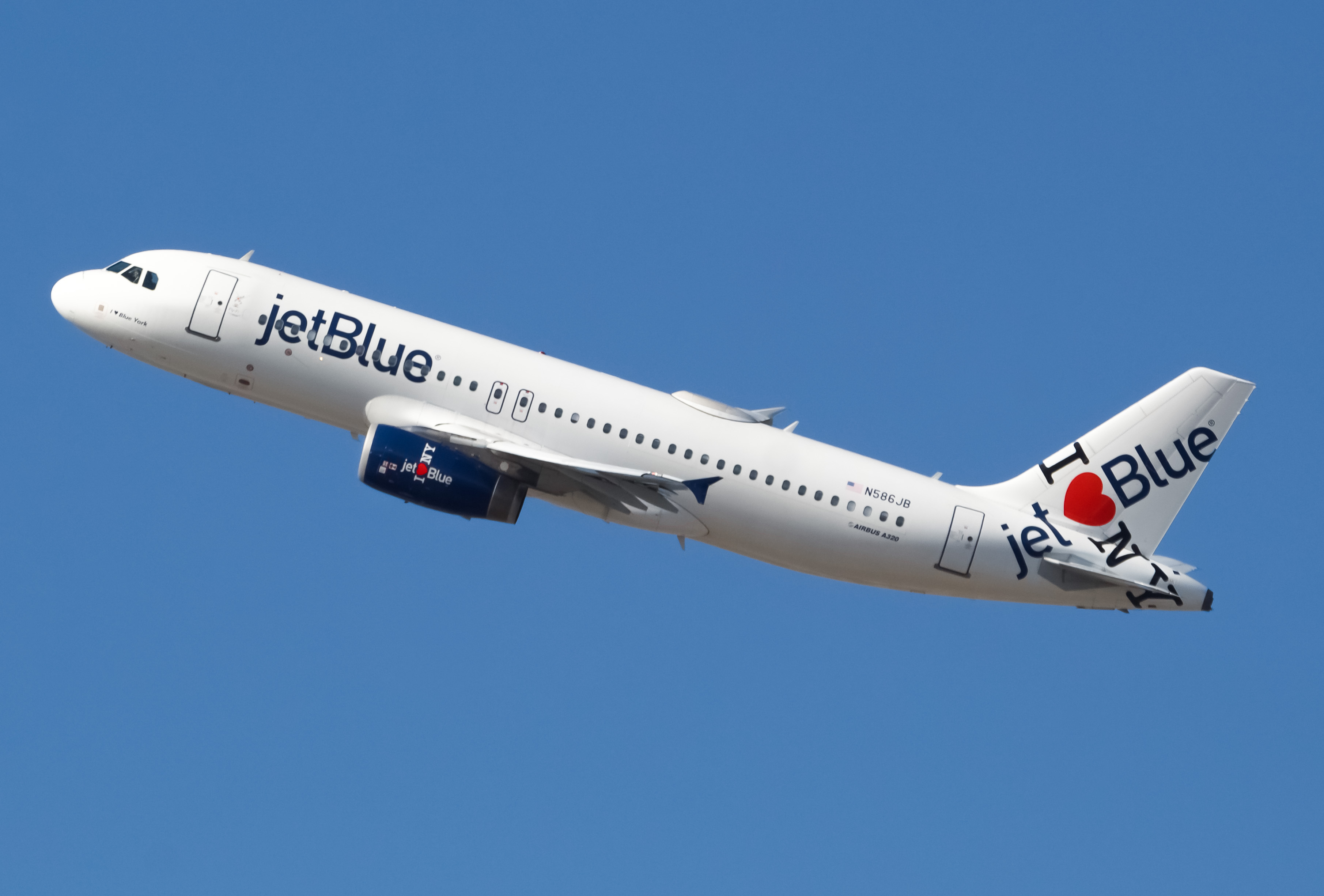Within its short lifetime, JetBlue has become a beloved carrier with an innovative product and low-cost business model. It has grown rapidly to become a major U.S. airlinesSeeing success throughout its first 20 years in existence. However, if the carrier had its way, it would have grown even more from mergers throughout the past decade.
JetBlue’s first merger target was low-cost carrier Virgin America. A San Francisco-based startup, Virgin America was very similar to JetBlue: both focused on offering low-cost travel options with an elevated travel experience, both operated a fleet of Airbus A320 family aircraft, and both had a positive reputation within the industry. Fleet commonality and similar business models made a strong case for a merger between the two. Additionally, the fact that JetBlue’s network was largely concentrated on the East Coast while Virgin America was on the West meant that the combined carrier expanded its network and customer base.

However, the geographic factors that made Virgin America an attractive target also acted as a massive selling point for Seattle-based Alaska Airlines. Alaska Airlines, who focused their routes on the West Coast, also made a bid to acquire Virgin America in hopes of further solidifying its position as a West Coast airline. In the end, Alaska was willing to pay more for the deal, leaving JetBlue without a merger partner. JetBlue continued to grow on its own, improving its product and entering new, mostly leisure-oriented markets.
However, another opportunity to grow through consolidation presented itself recently, when Frontier announced its intention to merge with ultra-low-cost carrier Spirit Airlines. Weeks after this announcement, JetBlue made a bid to acquire Spirit as well, and offered more money per share for the acquisition. Ultimately, Spirit is siding with Frontier, having rejected an earlier JetBlue bid, forcing the airline to respond with a "hostile" bid just yesterday. While a merger with JetBlue would boost the combined carrier’s East Coast presence (specifically in Florida), other factors, such as regulatory approval and differences in business models, serve as significant flaws in the proposed deal. Once again, JetBlue has found itself without a merger partner. However, given the success of the carrier’s products, it is likely that JetBlue will continue to expand its offerings without the assistance of consolidation.
KLM Strengthens European Network with Three Scenic Routes » Citation C550 Fireball: Greg Biffle and Five Others Killed in Failed Emergency Landing at KSVH » Engine Failure Forces United 777 Emergency Landing, Starts Brush Fire at Dulles Airport »
Comments (0)
Add Your Comment
SHARE
TAGS
INFORMATIONAL JetBluemergeracquisitionpartnerSpiritFrontierRECENTLY PUBLISHED
 Memphis at Midnight: Inside FedEx's Global Superhub
When considering major hub airports in the United States, few might think of Memphis International Airport (MEM). This facility, which is only the second busiest in Tennessee based on passenger volumes, might not boast an impressive flight schedule from passenger airlines. However, across the airfield from Memphis' passenger terminal, FedEx has turned the airport into a critical cargo superhub. In fact, between the hours of 10:00 PM and 5:00 AM, Memphis becomes the busiest airport in the world.
INFORMATIONAL
READ MORE »
Memphis at Midnight: Inside FedEx's Global Superhub
When considering major hub airports in the United States, few might think of Memphis International Airport (MEM). This facility, which is only the second busiest in Tennessee based on passenger volumes, might not boast an impressive flight schedule from passenger airlines. However, across the airfield from Memphis' passenger terminal, FedEx has turned the airport into a critical cargo superhub. In fact, between the hours of 10:00 PM and 5:00 AM, Memphis becomes the busiest airport in the world.
INFORMATIONAL
READ MORE »
 Should Students Have Homework? Better After-School Balance
Is homework bad for students? Explore learning benefits, stress, sleep, and smarter workload limits, so after-school time stays balanced.
STORIES
READ MORE »
Should Students Have Homework? Better After-School Balance
Is homework bad for students? Explore learning benefits, stress, sleep, and smarter workload limits, so after-school time stays balanced.
STORIES
READ MORE »
 Air Canada Rouge to Launch Boeing 737 MAX 8 Operations
Air Canada has officially confirmed a strategic shift for its leisure subsidiary, Air Canada Rouge, announcing that Boeing 737-8 (MAX 8) operations are slated to begin in late Q1 2026. The move marks the beginning of an ambitious year-long transition that will see Rouge evolve into an all-Boeing 737 operator.
ROUTES
READ MORE »
Air Canada Rouge to Launch Boeing 737 MAX 8 Operations
Air Canada has officially confirmed a strategic shift for its leisure subsidiary, Air Canada Rouge, announcing that Boeing 737-8 (MAX 8) operations are slated to begin in late Q1 2026. The move marks the beginning of an ambitious year-long transition that will see Rouge evolve into an all-Boeing 737 operator.
ROUTES
READ MORE »



